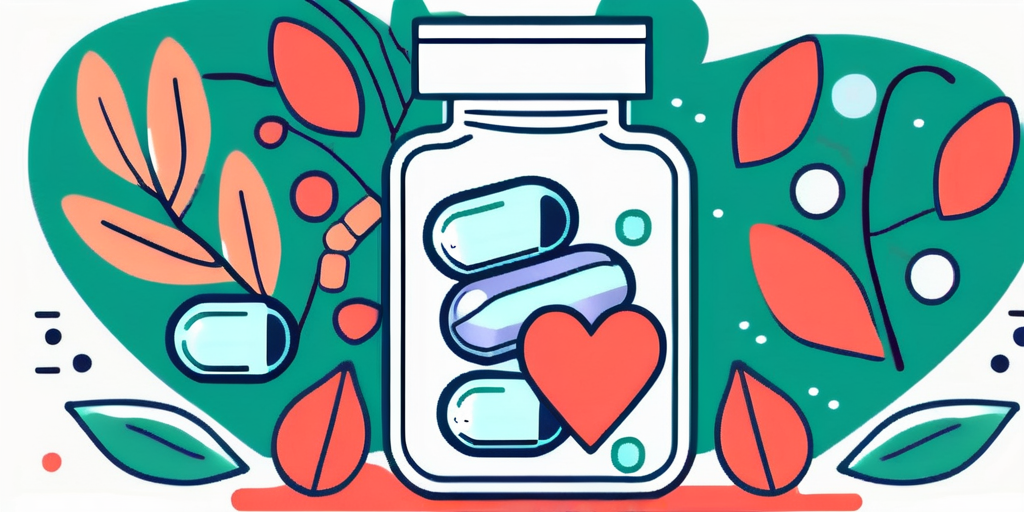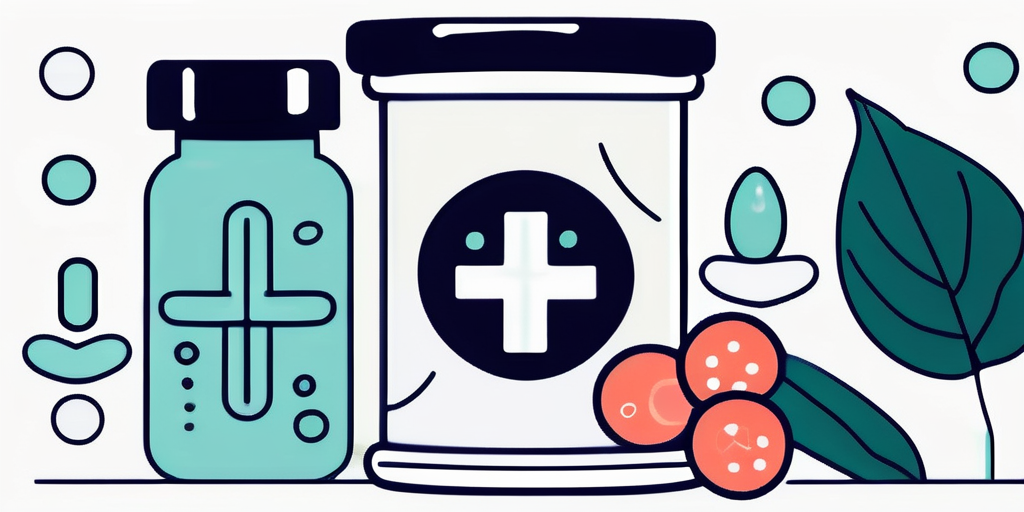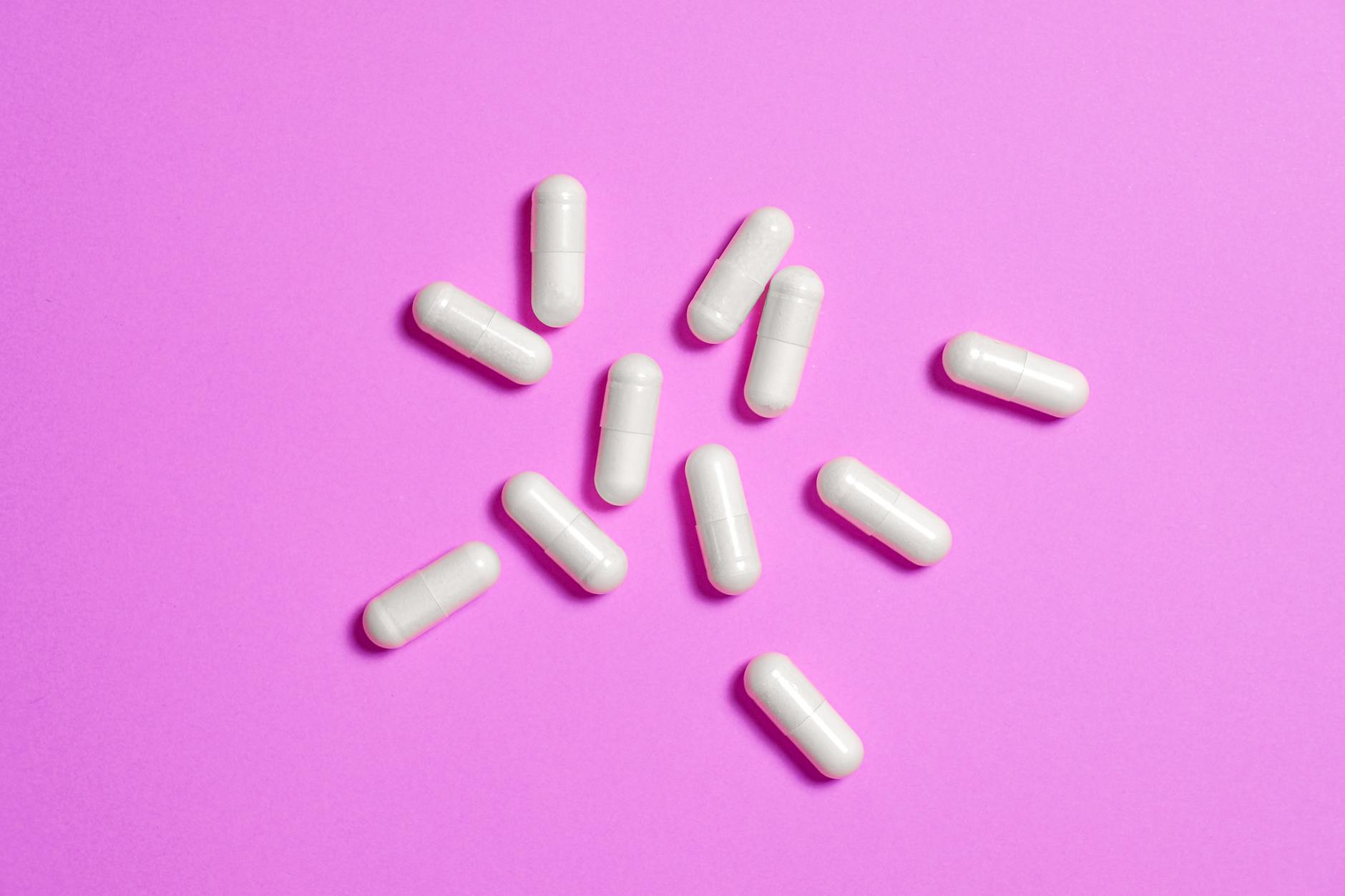Low Dose Naltrexone (LDN) is a medication that has gained significant attention in recent years for its potential benefits in various health conditions. This comprehensive guide aims to provide you with a deeper understanding of LDN, its uses, and its safety profile.
Understanding Naltrexone: An Overview
Naltrexone is a medication that was originally approved by the FDA in 1984 for the treatment of opioid addiction. It works by blocking the effects of opioids in the brain, thereby reducing cravings and preventing relapse. However, in recent years, researchers have discovered that when taken at lower doses, naltrexone can have a different set of effects on the body.
Naltrexone has proven to be a valuable tool in the treatment of opioid addiction. By blocking the opioid receptors in the brain, it helps individuals overcome their dependence on opioids and break the cycle of addiction. This medication has been shown to significantly reduce cravings, allowing individuals to focus on their recovery and regain control of their lives.
What is Naltrexone?
Naltrexone is an opioid receptor antagonist that binds to the same receptors in the brain as opioids. By blocking these receptors, naltrexone prevents opioids from attaching to them, thereby reducing their effects.
It is important to note that naltrexone is not an opioid itself and does not produce the same euphoric effects as opioids. Instead, it acts as a barrier, preventing opioids from binding to the receptors and triggering the desired response. This mechanism of action makes naltrexone an effective tool in the treatment of opioid addiction.
The Science Behind Naltrexone
The exact mechanism of action of naltrexone is not fully understood. However, it is believed to work by blocking the release of endorphins, which are the body’s natural painkillers. This blockade of endorphins leads to an upregulation of opioid receptors, increasing the sensitivity of these receptors to endorphins. As a result, when naltrexone is discontinued, the body experiences a surge in endorphins, which can help modulate pain and improve overall well-being.
Furthermore, naltrexone has been found to have immunomodulatory effects. It has been shown to reduce inflammation in the body and modulate the immune response. This additional benefit of naltrexone has led to its exploration in the treatment of various autoimmune disorders, such as multiple sclerosis and Crohn’s disease.
Research has also suggested that naltrexone may have neuroprotective properties. Studies have shown that it can help protect brain cells from damage and promote their survival. This has sparked interest in its potential use in the treatment of neurodegenerative diseases, such as Alzheimer’s and Parkinson’s.
Moreover, naltrexone has been found to have a positive impact on mental health. It has been shown to reduce symptoms of depression and anxiety, possibly by modulating the release of certain neurotransmitters in the brain. This dual action on both the physical and mental aspects of health makes naltrexone a versatile medication with a wide range of potential applications.
In conclusion, naltrexone is a medication that has proven to be highly effective in the treatment of opioid addiction. Its ability to block the effects of opioids in the brain has helped countless individuals overcome their dependence and achieve long-term recovery. Additionally, ongoing research has revealed other potential benefits of naltrexone, including its immunomodulatory, neuroprotective, and mental health effects. As scientists continue to explore the full potential of this medication, it holds promise for the treatment of various conditions beyond addiction.
Delving into Low Dose Naltrexone
Low Dose Naltrexone (LDN), as the name suggests, refers to the use of naltrexone at significantly lower doses than those used for opioid addiction treatment. Generally, LDN is prescribed at doses ranging from 1.5 to 4.5 mg, typically taken orally at bedtime.
Defining Low Dose Naltrexone
LDN is thought to work by temporarily blocking the opioid receptors for a few hours during sleep, leading to increased endorphin production when the receptors become unblocked. This increase in endorphin levels can have various beneficial effects on the body.
When LDN is taken at bedtime, it allows the medication to work overnight, when the body is in a state of rest and repair. During this time, LDN helps to modulate the immune system, reducing inflammation and promoting tissue repair. By blocking the opioid receptors, LDN also enhances the body’s natural detoxification processes, aiding in the elimination of toxins and waste products.
Moreover, LDN has been found to have neuroprotective effects. It can help protect the brain and nervous system from damage caused by various factors such as oxidative stress and inflammation. By supporting the health and function of nerve cells, LDN may contribute to improved cognitive function and overall neurological well-being.
How Low Dose Naltrexone Works
The action of LDN on the body is multifaceted and complex. In addition to its effects on endorphin production and immune modulation, LDN has been found to interact with other systems in the body.
One of the key mechanisms by which LDN exerts its effects is through its interaction with the opioid receptors. By blocking these receptors temporarily, LDN prevents the binding of endogenous opioids, such as endorphins, to these receptors. This blockade leads to an upregulation of opioid receptors and an increase in endorphin production once the blockade is lifted. The surge in endorphins can have analgesic and mood-enhancing effects, providing relief from pain and promoting a sense of well-being.
Furthermore, LDN has been shown to modulate the immune system. It can help balance the activity of immune cells, reducing excessive inflammation and promoting a more regulated immune response. This immune-modulating effect of LDN has been studied in various autoimmune conditions, such as multiple sclerosis, Crohn’s disease, and rheumatoid arthritis, where it has shown promise in reducing disease activity and improving symptoms.
Additionally, LDN has been found to promote tissue repair and regeneration. It stimulates the production of growth factors and promotes the proliferation of cells involved in tissue healing. This regenerative effect of LDN can be beneficial in conditions where tissue damage or dysfunction is present, such as in chronic wounds, fibromyalgia, and certain neurological disorders.
Overall, the multifaceted actions of LDN make it a promising therapeutic option for a wide range of conditions. Its ability to modulate the immune system, reduce inflammation, promote tissue repair, and enhance natural detoxification processes contribute to its potential benefits in various health conditions. However, it is important to note that LDN should only be used under the guidance of a healthcare professional, as individual dosing and monitoring are crucial for optimal outcomes.
The Multifaceted Benefits of Low Dose Naltrexone
LDN has been studied for its potential benefits in various health conditions. While research is ongoing, there is evidence to suggest that LDN may be beneficial in pain management, mental health disorders, and autoimmune diseases.

Pain Management and Low Dose Naltrexone
LDN has been reported to have analgesic effects, potentially making it a valuable option for individuals suffering from chronic pain conditions. By modulating the immune system and reducing inflammation, LDN may help alleviate pain and improve quality of life.
Mental Health and Low Dose Naltrexone
Emerging research indicates that LDN may have positive effects on mental health conditions such as depression, anxiety, and post-traumatic stress disorder (PTSD). By modulating the immune system and improving neurotransmitter function, LDN may offer new possibilities for mental health treatment.
Autoimmune Diseases and Low Dose Naltrexone
LDN’s immunomodulatory properties have sparked interest in its potential use for autoimmune diseases such as multiple sclerosis, rheumatoid arthritis, and Crohn’s disease. By rebalancing the immune system, LDN may help reduce autoimmune activity and improve symptoms.
The Safety Profile of Low Dose Naltrexone
LDN is generally well-tolerated, with few reported side effects. However, it is important to note that individual responses may vary. It is essential to consult with a healthcare provider before starting LDN to ensure its appropriateness for your specific situation.

Potential Side Effects
Common side effects of LDN include mild to moderate nausea, stomach discomfort, and vivid dreams. These side effects are typically temporary and resolve over time. If any side effects persist or worsen, it is important to consult your healthcare provider.
Precautions and Contraindications
LDN should be used with caution in individuals with liver or kidney disease, as well as those taking opioid medications. It is essential to inform your healthcare provider of any existing medical conditions or medications you are taking before starting LDN.
How to Start Using Low Dose Naltrexone
If you and your healthcare provider determine that LDN may be suitable for your needs, it is important to follow the recommended guidelines for dosage and administration.

Consulting Your Healthcare Provider
Prior to starting LDN, it is crucial to have a thorough discussion with your healthcare provider. They can evaluate your medical history, conduct necessary assessments, and provide personalized recommendations based on your specific needs.
Dosage and Administration Guidelines
The recommended starting dose of LDN is typically 1.5 mg taken orally at bedtime. This dose can be titrated upwards to a maximum of 4.5 mg, as tolerated. It is important to follow your healthcare provider’s instructions regarding dosage adjustments and any other specific recommendations.
In conclusion, Low Dose Naltrexone (LDN) holds promise as an adjunctive therapy for various health conditions. Its multifaceted benefits, ranging from pain management to immune system modulation, offer potential opportunities for improved well-being. However, it is important to remember that LDN is not a substitute for comprehensive medical care. Consultation with a knowledgeable healthcare provider is crucial to determine if LDN is appropriate for your individual situation. With careful consideration and guidance, LDN may become a valuable tool in optimizing your health and quality of life.


